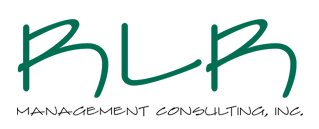Banking Cannabis: The Clues and Keys To Safely Banking The Industry
There is a collection of information that gives bankers clues as to what regulatory guidance, rules, and best practices will eventually look like when it comes to banking the Cannabis industry. FinCEN provided initial guidance that has been applied by States to provide Safe Harbors for their banking institutions that engage with Cannabis Related Businesses (CRB’s). But the most comprehensive guidance in our opinion was developed by the State of California’s Department of Business Oversight (DBO). The DBO guidance, combined with the Conference of State Bank Supervisors (CSBS) Job Aid, provides a good framework for future regulation writing and best practice adherence.
That guidance outlines the basic needs a financial institution will have to put in place to avoid an inordinate amount of scrutiny from bank regulators. In summary, financial institutions will need the following:
An existing, robust, AML/BSA/KYC/USA Patriot Act Program: This is the core area of concern for safely banking the industry. Make no mistake, there is a fair amount of money laundering that is occurring every day in the Cannabis related industry. It is incumbent upon banks to significantly inhibit that activity. While no bank can assure that no money laundering is ever occurring, the financial services industry has been mandated to have appropriate controls in place to identify that activity and curtail it. For financial institutions that have recognized deficiencies in these programs, regulators will most likely insist that they cure those issues before engaging in this higher-risk deposit business.
Subject Matter Expertise: Complying with Cannabis laws is not as simple as adhering to the existing State laws or the anticipated federal banking regulations. There are a host of municipal and local laws that come into play, as well. Knowing who even has jurisdiction is an important part of vetting the individual CRB’s. This web of regulations and laws is ever changing, as authorities discover and respond to loopholes and oversights. For the same reasons, we expect that the federal regulation will remain dynamic for several years after they are written. Many of the regulations and rules will likely be easy to interpret, but there will be many that change as the best practices evolve for the industry. Keeping up with the myriad and evolving authorities are going to cause internal compliance, risk management, and legal personnel no small amount of anxiety.
Resources: A comprehensive Cannabis program is going to require more than a robust set of policy and procedures. It is going to require that each Cannabis Related Business go through a vetting process. Financial institutions will need to ensure that each CRB is licensed, operating in compliance with all State and Local laws, and has no black or grey market activities. They will have to review each CRB’s seed to sale (track and trace) technology, ensure that technology is adequately capturing all cash in and outflows into the business and reporting up to the State’s taxation technology (if required). This is not a one and done audit. The financial institution will need to conduct ongoing audits, investigate any cash anomalies in the CRB, process SARS and CTR’s, and provide a copious record of the financial institution’s actions for the regulators.
Technology and Reporting: Tracking the deposit activity and cash flow anomalies is essential to having a program for Cannabis Related Businesses. Multiple CTR and specific SAR filing is going to be a time-consumptive process. The more that process can be automated the easier it will be for both frontline staff and the financial institutions supervisory apparatus that will be monitoring the program. Automated reports that make sense and can be aggregated to summarize all CRB deposit activity and break out the activities of each individual CRB is going to streamline the oversight responsibilities at each level of management up to the board of directors or audit committee.
